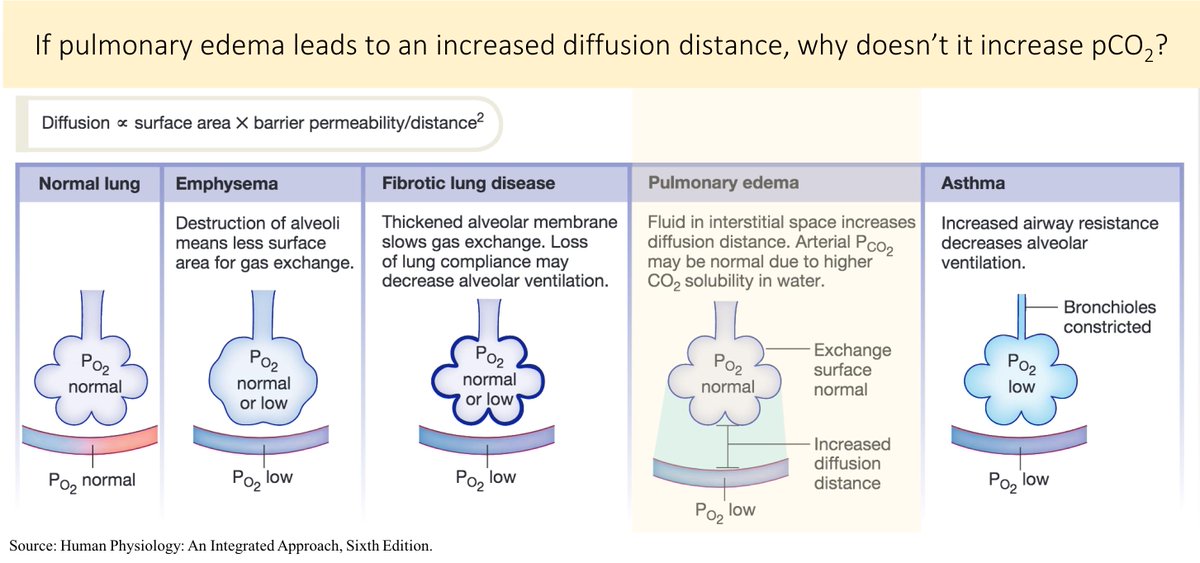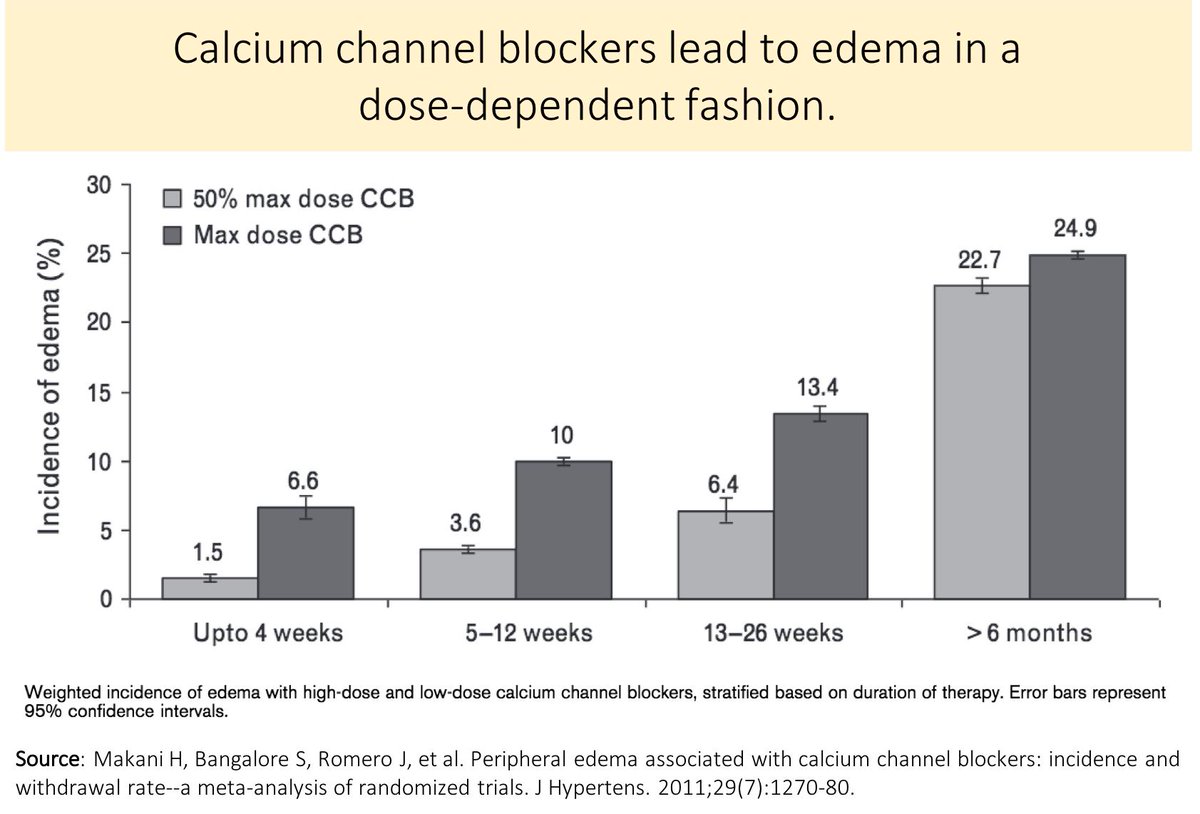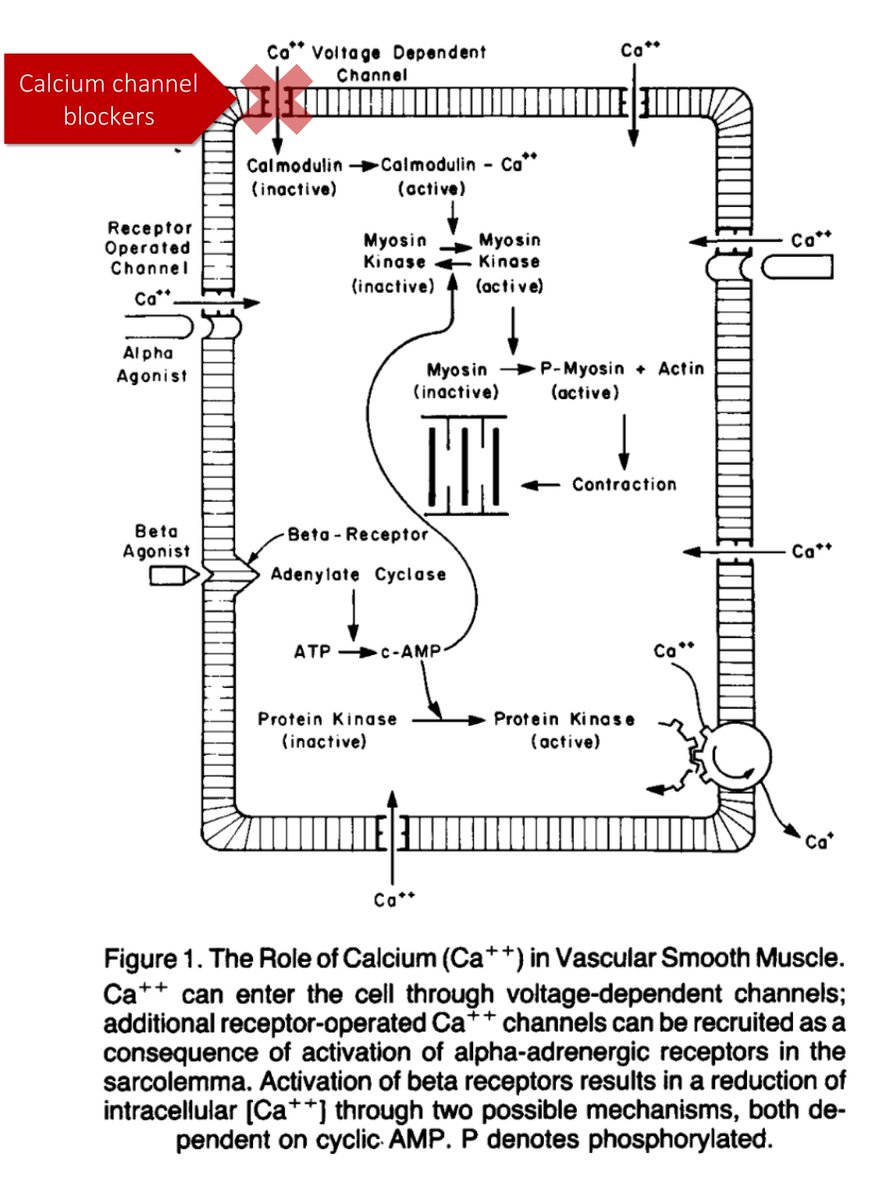Regarding the global burden of disease, we are fortunate that GAS remains sensitive to penicillin, particularly given that it causes:
*more than 500k deaths/year globally (Pic 1)
*hundreds of millions of total infections/year globally (Pic 2)
ncbi.nlm.nih.gov/pubmed/16253886
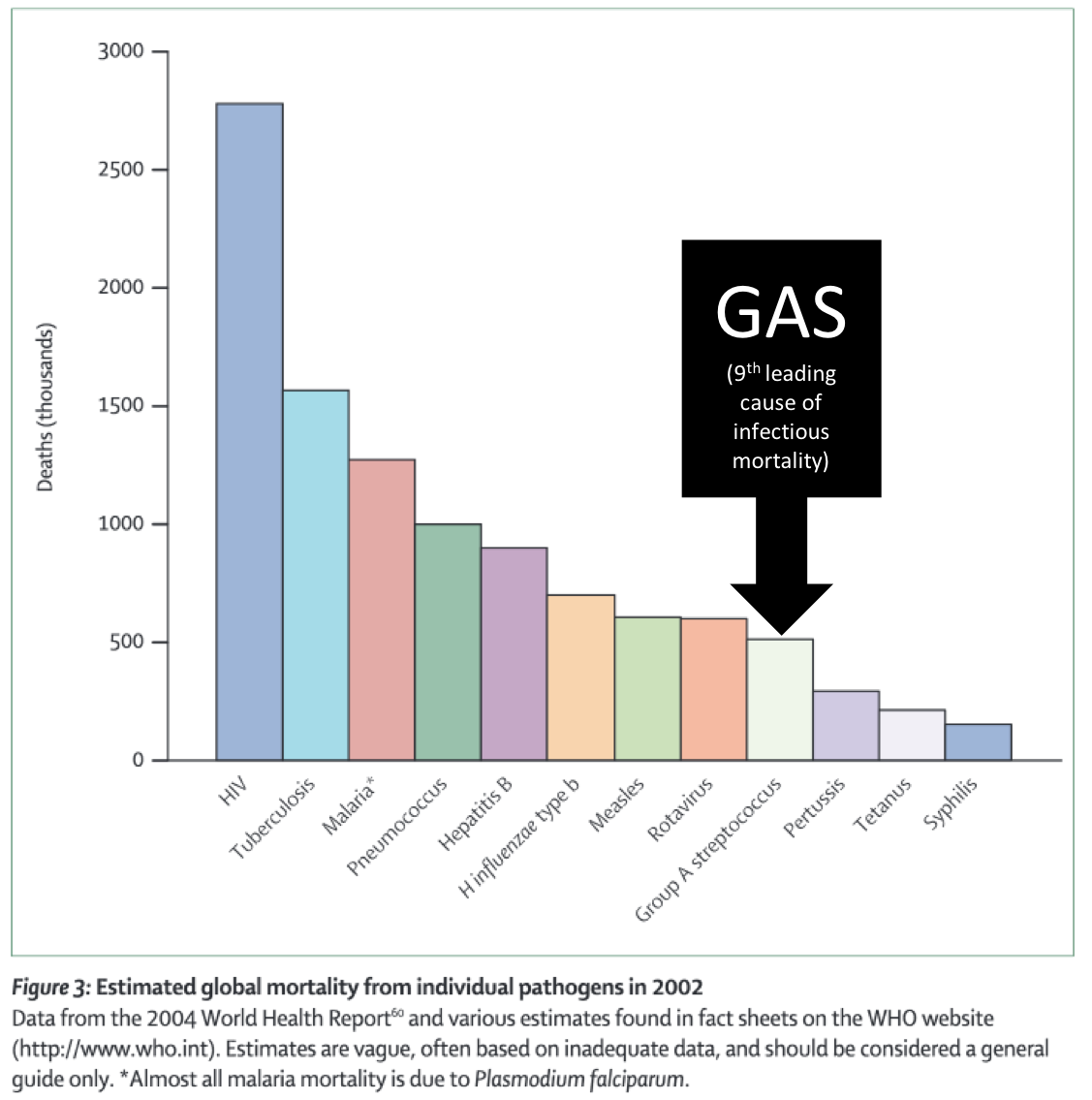

So, again, let’s be thankful GAS remains sensitive to penicillin. But, why is this?
Which of the following contribute to the fact that GAS has yet to develop resistance to penicillin?
[PBPs = penicillin binding proteins; HGT = horizontal gene transfer)
To understand the answer, we must first review how penicillin (PCN) works.
Short version: PCN binds to “penicillin binding proteins” (PBPs) which are transpeptidases. The result is inhibition of cell wall synthesis and, eventually, bacterial death.
Based on this mechanism of action, it should be clear that in order for penicillin to be active against GAS, it must have PBPs!
ncbi.nlm.nih.gov/pubmed/7027926
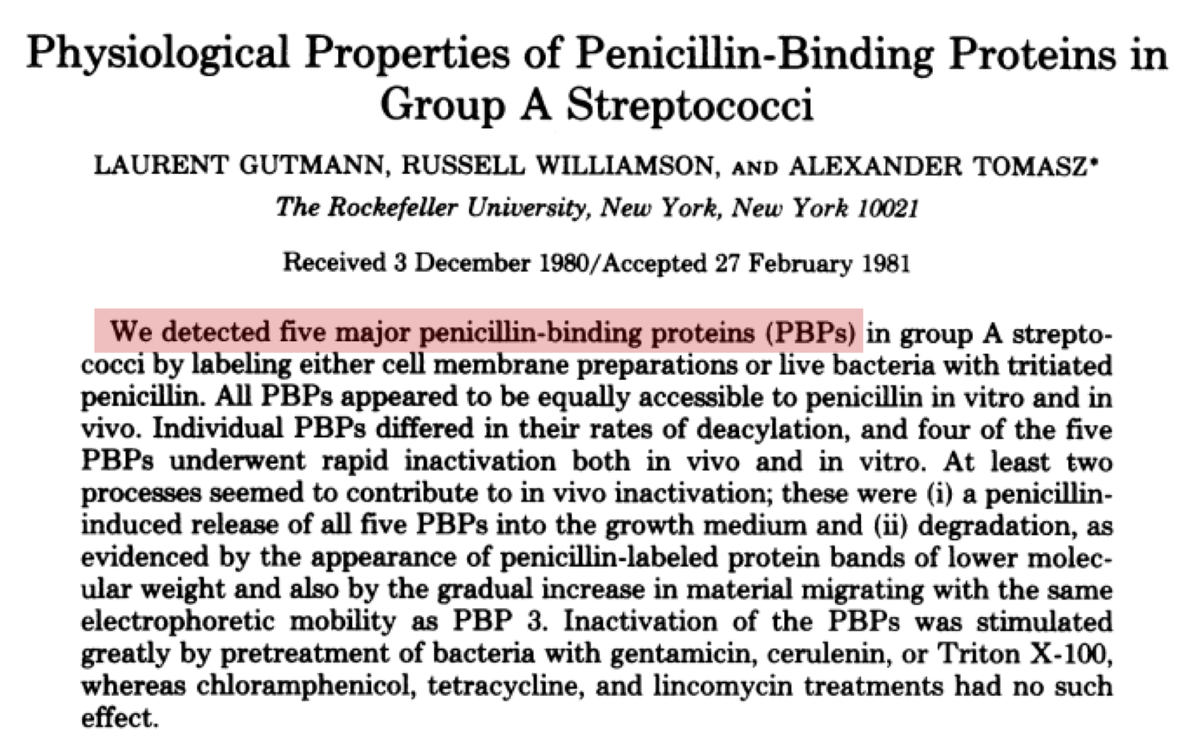
Based on the above, there are at least two ways that GAS could generate resistance to penicillin:
*acquire a penicillinase (this is what S. aureus has done)
*mutate penicillin binding proteins so they just don't bind penicillin as well (this is what S. pneumoniae has done)
In order for a bacterium to utilize penicillinase, the gene encoding this beta-lactamase must:
*safely enter the GAS bacterium (via a plasmid)
*incorporate into the genome
For GAS, both of these are problems!
We've known since the 1950s that GAS produces extracellular DNAse.
This makes GAS well equipped to destroy foreign DNA, including plasmids that contain penicillinase.
The DNA may get it, but it's degraded before integration.
ncbi.nlm.nih.gov/pubmed/13539305
GAS also has type II DNA restriction systems. These systems limit replication and/or incorporation of DNA and may provide an additional barrier to GAS acquisition of penicillinase.
ncbi.nlm.nih.gov/pubmed/9636860
So, GAS hasn't acquired penicillinase.
But, why hasn't it utilized the mechanism of resistance that S. pneumoniae uses (i.e., mutate PBPs, making them less able to bind PCN)?
In 1958, Rosendal created PCN-resistant strains by passing GAS through medium containing sublethal concentrations of the antibiotic.
Thing is: the resulting bacterium were just not virulent (e.g., decreased M-protein and changes in hyaluronic acid).
ncbi.nlm.nih.gov/pubmed/13508261
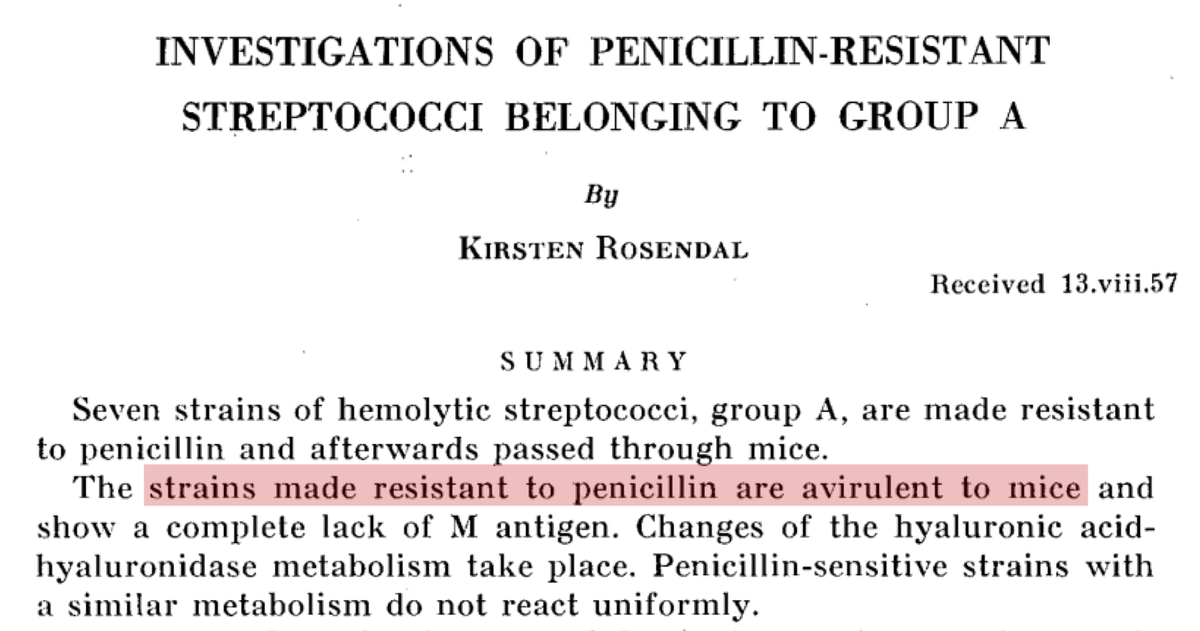
It also seems that the changes associated with PCN resistance come with defects that lead to poor growth rates.
Remember: PBCs are enzymes essential for cell wall synthesis. You mutate one and the bacterium may not do well...
ncbi.nlm.nih.gov/pubmed/6181734
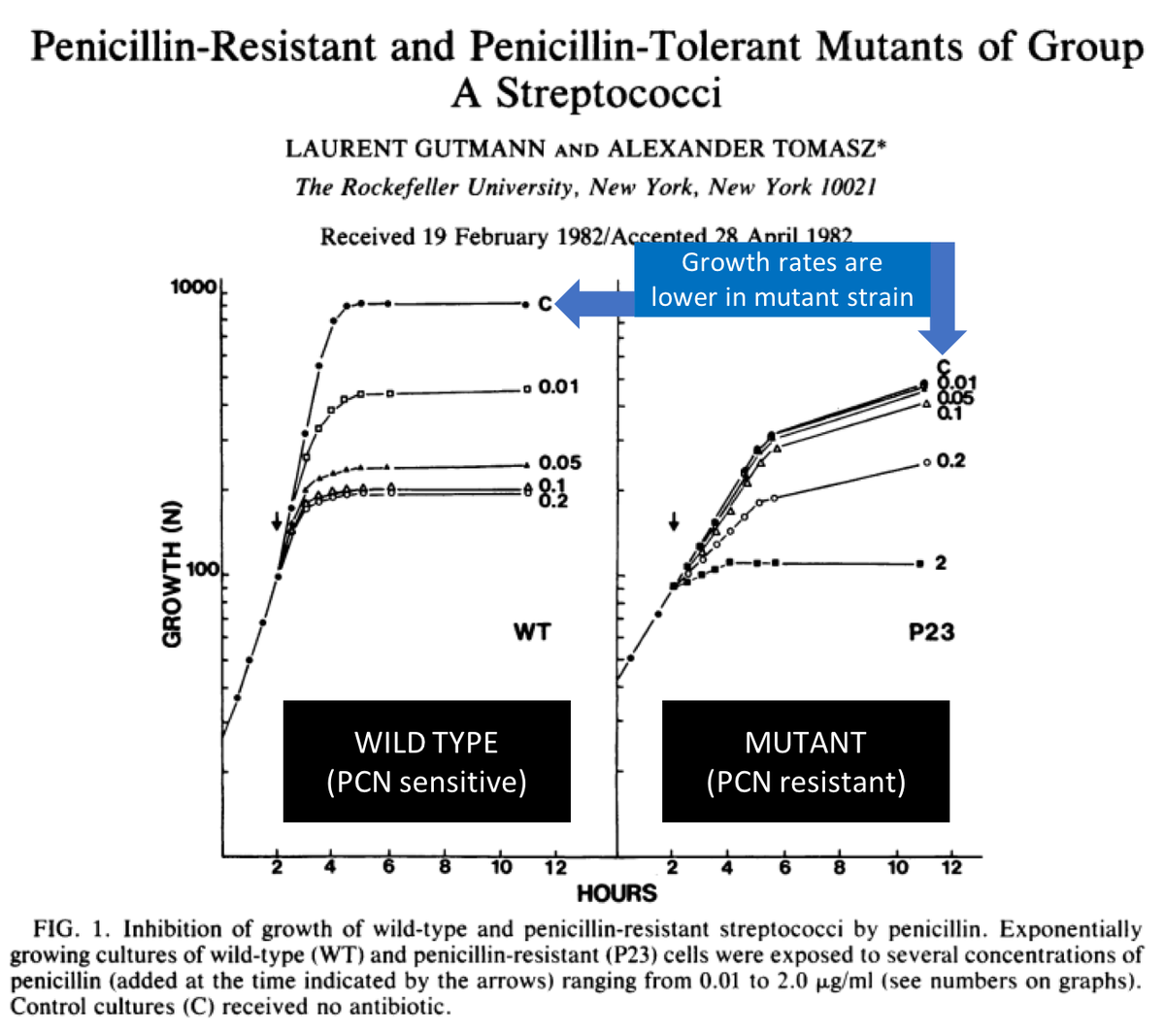
Before summing up, let's look again at the original question.
Which of the following contribute to the fact that GAS has yet to develop resistance to penicillin?
[PBPs = penicillin binding proteins; HGT = horizontal gene transfer)
To summarize, GAS remains PCN sensitive because it:
⭐️has NOT acquired penicillinase because (a) DNAse breaks down foreign DNA; (b) there are restrictions to integration
⭐️lacks mutated PBPs because such strains (a) are less virulent; (b) grow less well
Phew.
If you found this thread interesting, I have a similar one asking: "Why hasn't syphilis developed resistance to penicillin?"



